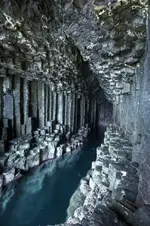Id say that the current work has quite a ways to go before they hit anywhere near the levels excavated to in the past.
1909 and 1931...
View attachment 1674591 View attachment 1674592
"U" shaped coffer dam exposed in 1960...
View attachment 1674567 View attachment 1674568
1970's this massive trench was simply bulldozed flat to fill it...this is probably the "tunnels" the current seismic study has found.
View attachment 1674582 View attachment 1674583
A sample of the digging, coffer dams, shafts, trenches, shoring, blasting, and other works...late 1800's, all before
1900. with references to excavation encountered from the early 1800's
1850
Under the rocks are five 8-inch wide drains of flat stones over pairs of parallel lines of stones converging to a single larger drain at the high tide line, leading inland.
As the drains are excavated, they are found to slope down toward the shore.
1861
April 3
The Oak Island Association syndicate is formed, based on the Truro syndicate. Included are Adam Tupper, Jotham McCully, James McNutt, Jefferson McDonald, Samuel Retti, and George Mitchell. They make a deal with land owner Anthony Graves, to give him one-third of any treasure recovered. The company issues 100 shares at $20 each. [4.48] (1860 [5.50]) (1863 [7.37])
(month unknown)
The Oak Island Association resumes the search. The Money Pit is cleared to 88 feet, encountering no water. A new shaft (5B) 25 feet away is dug to 120 feet, with no sign of the flood tunnel. [4.48] [5.50] (1863 [1.194] [7.38])
Another shaft (No. 6) is dug 18 feet west of Money Pit. At 118 feet, a horizontal tunnel toward the Money Pit is started. At 17 feet toward the main shaft, water and mud again rush in. A pumping gin is employed, but stopped after three days pumping with no progress in keeping the water out. [4.50] [5.50]
A tunnel is dug from the 120 foot shaft, 25 feet away from the Money Pit. Again, as they get close to the main pit, uncontrollable water rushes in. They try bailing the three shafts using four 70-gallon buckets with all 63 men and 33 horses. They abandon this after a couple days. [4.50] [5.51]
Two men go into a connecting tunnel toward the Money Pit to clear out the mud. A big crash is heard, the men barely escape, and water rushes in. The water level is lowered again, then another big crash is heard, then collapse of timbering within Money Pit, leaving only the upper 30 feet. Now, the bottom is sounded at 102 feet, 14 feet lower than previous. Some artifacts are recovered from the inrush of debris, but no treasure. Artifacts recovered: bottom of yellow painted barrel or dish, stick of oak timber 3.5 feet long, piece of juniper with bark on and cut at each end, spruce slab with mining auger hole in it. [4.50] [5.51] [7.38]
The Oak Island Association raises another $2000. [4.53]
September 30
The Novascotian publishes an article "The Oak Island Folly". [3.43] [5.206]
1862
(Spring) The Oak Island Association digs a shaft (No. 7) close to the west of the Money Pit. It is dug to 107 feet, using a pump to keep it free of water.
At 90 feet tools from 1850 Truro work are found; at 100 feet tools of 1804 Onslow are found. No sign of the water tunnel is found down to 107 feet. Then the Money Pit is dug and sides cribbed to 103 feet, but pumping cannot keep up with water to dig further. [4.54] [5.52] [7.39]
A new shaft is dug inland from Smith's Cove, down to 50 feet, no flood tunnel found. Tunnels are dug from the bottom in various directions, but encounter no flood tunnel. [4.54] [5.52] [7.39]
The box drains of Smith's Cove are uncovered and 30-40 feet are removed and packed full of clay. This reduces the water flow into the Money Pit, but the sea soon clears out the clay. [4.55] [5.52] [7.39]
Box drains removed?
1863
Shaft 9 is dug, 100 feet south-east of the Money Pit, 20 feet south of the assumed line of the flood tunnel. They dig down to 120 feet, then dig toward Smith's Cove in search of the flood tunnel. Another tunnel is dug toward the Money Pit, reaching it at the 108 foot level. The Money Pit is cribbed to 108 feet, and tunnels are dug from that level in search of treasure. [1.196] [4.54] [5.52] [7.39]
1866 Who built to coffer dam?
The Oak Island Eldorado Company builds a
375 foot long 12 foot high dam of wood and clay at Smith's Cove. The dam fails to keep water out of the Money Pit, and the sea quickly destroys the dam. [1.195] [4.56] [5.54] [7.43]
November 26
(to January 7, 1867) The Money Pit is cleared to 108 feet, and continuous pumping keeps the water level low. A drill is set at the 90 foot level. Drilling hits spruce wood at 110 feet. At 128 feet, borings include coconut fiber, wood chips, and charcoal. At 132 feet, oak borings, chips of spruce or poplar, and coconut fiber. At 158-163 feet, all holes hit hard reddish marl natural to the island. [1.195] [5.54] [4.57] [7.43,44]
1897
The Oak Island Treasure Company drills to 153 feet, then encounters 7 inches of soft stone, 5 inches of oak, then perhaps soft metal. Drill operator William Chappell finds traces of gold on the drill, but keeps it a secret. [1.171]
Five small holes, 15 feet apart, along a line 80-95 feet are drilled 50 feet inland from high tide on Smith's Cove. Only the center hole reaches salt water at 80 feet. Each hole is loaded with 50-75 pounds of dynamite, and blown up. No great effect.
160 pounds detonated in the middle hole causes water in the Money Pit and Cave-in Pit to foam and bubble, proving a connection between the Money Pit and the shore. [1.197] [4.66] [5.63] [7.84]
Captain Welling discovers an equilateral triangle of stones near the high water mark of the south shore, 10 feet on each side, with the base running approximately east-to-west. [4.112] [7.92]
Assuming the flood tunnel is now clogged from the dynamiting, work commences on the Money Pit. Water is pumped out down to 100 feet, and a platform and drill (2.5-inch drill in 3-inch pipe) are set at the 90 foot level. The first drilling hits oak at 126 feet, for 5 inches, then hits iron, can't drill through it. [1.197] [4.68] [5.65] [7.85]
The second drill hole is made 1 foot from the first. Drilling gets to 153 feet 8 inches, then hits soft stone or cement, 7 inches thick, then 5 inches solid oak. Then a 1.5-2 inch gap, then through possibly soft metal. Further drilling in this hole encounters (possibly) metal in pieces, then the same undrillable iron near 154 ft. Borings brought up include oak chips, coconut fiber, and other bits that will be examined later (piece of parchment). [1.197] [4.68] [5.65] [7.85]
The third drill hole strikes wood at 122 feet, then cement at 153 feet. Then the drill runs between wood and cement for 4 feet, and cement alone another 3 feet, then 11 feet of blue puddled clay to a depth of 160 feet. Then an iron barrier is struck at 171 feet. Drilling for 2-3 hours only gets 1/4 inch into the iron. Borings checked with a magnet confirm iron cuttings. [4.68] [5.65] [7.85]
The fourth hole encounters iron at 166 feet, passes through, then drilling ends at 188 feet in solid clay. [5.65] [7.85]
The fifth hole encounters cement at 150 feet, continuing for 20 feet, then drilling through clay ends at 175 feet. One hole encounters gushing water at 126 feet, 400 gallons per minute flow rate, suggesting a tunnel to the south shore. [4.68] [5.65] [7.85]
At the Court House in Amherst, Dr. A.E. Porter studies with a magnifying glass recent borings brought up from drilling. He unrolls a tiny fragment that appears to be parchment with writing, possibly showing "vi", "ui", or "wi". [1.197] [4.68] [7.89]
Experts in Boston examine the tiny piece of parchment, confirming the material and that it is inscribed with India ink. [1.197] [4.68] [7.89]
1898
April
Shaft #18 near the Money Pit is dug down to 160 feet, then water rushes in. Water in the Money Pit initially lowers by 14 feet, indicating the two pits are connected. [4.72] [5.74] [7.90]
Shaft 19 is dug to 144 feet, then abandoned due to quicksand, unsafe soil, boulders, or inrush of water. [4.72] [7.90]
1899
Shaft 20, 5 feet by 8 feet, is excavated beside the Money Pit on the west side. A mass of cribbing is encountered, likely from
1850 excavations. By 113 feet, the pumps are overwhelmed by the quantity of water flowing
Summary:
Again, what part of this island has not been excavated to at least 100 or more feet? Wonder if the current people looking for the finger drains realize they were partially removed in 1850, and later in 1862...
1850: Under the rocks are five 8-inch wide drains of flat stones over pairs of parallel lines of stones converging to a single larger drain at the high tide line, leading inland. As the drains are excavated, they are found to slope down toward the shore
1862: The Oak Island Eldorado Company builds a 375 foot long 12 foot high dam of wood and clay at Smith's Cove Do they realize the "u" shaped coffer dam (with the roman numerals, was built in 1862) Carved with an axe, what else would you number with than notch simple roman numerals with an axe

?
1866: The box drains of Smith's Cove are uncovered and 30-40 feet are removed and packed full of clay.
Has anyone simply drilled a well to see what the naturally occurring groundwater level is on an island next to the Ocean











 ?
?